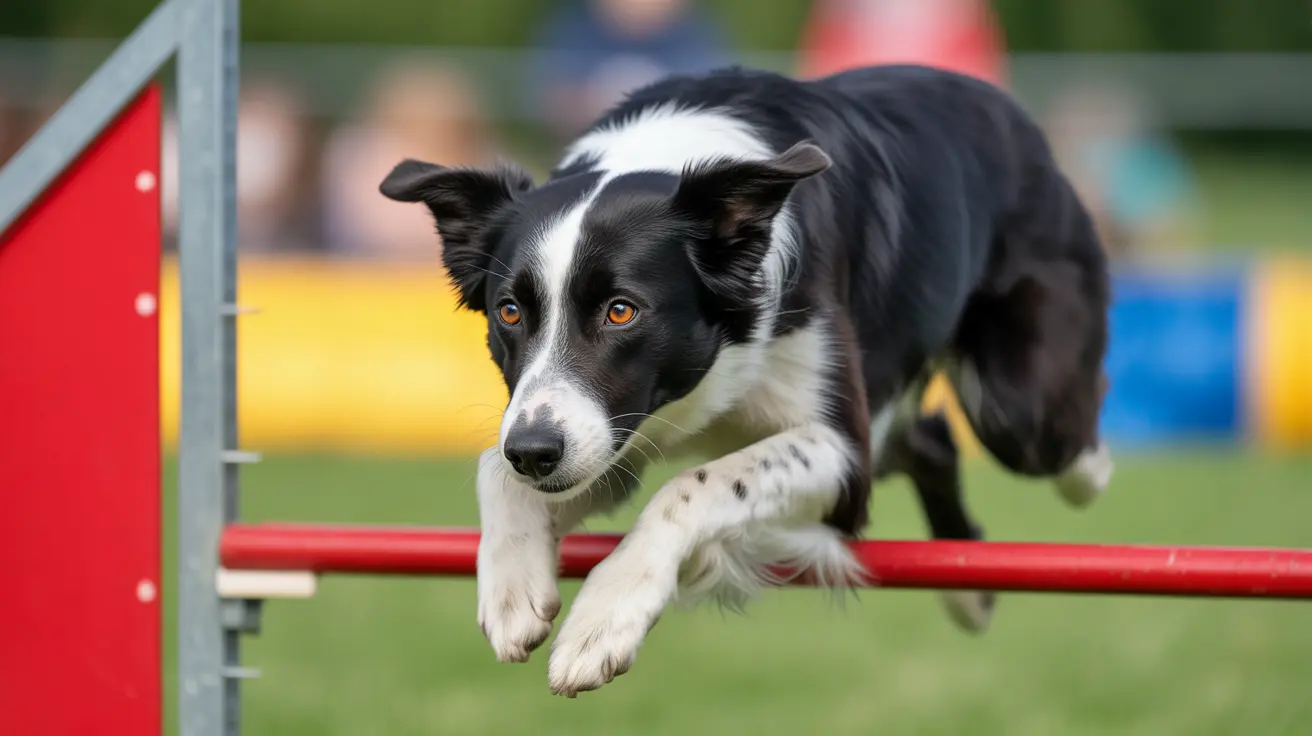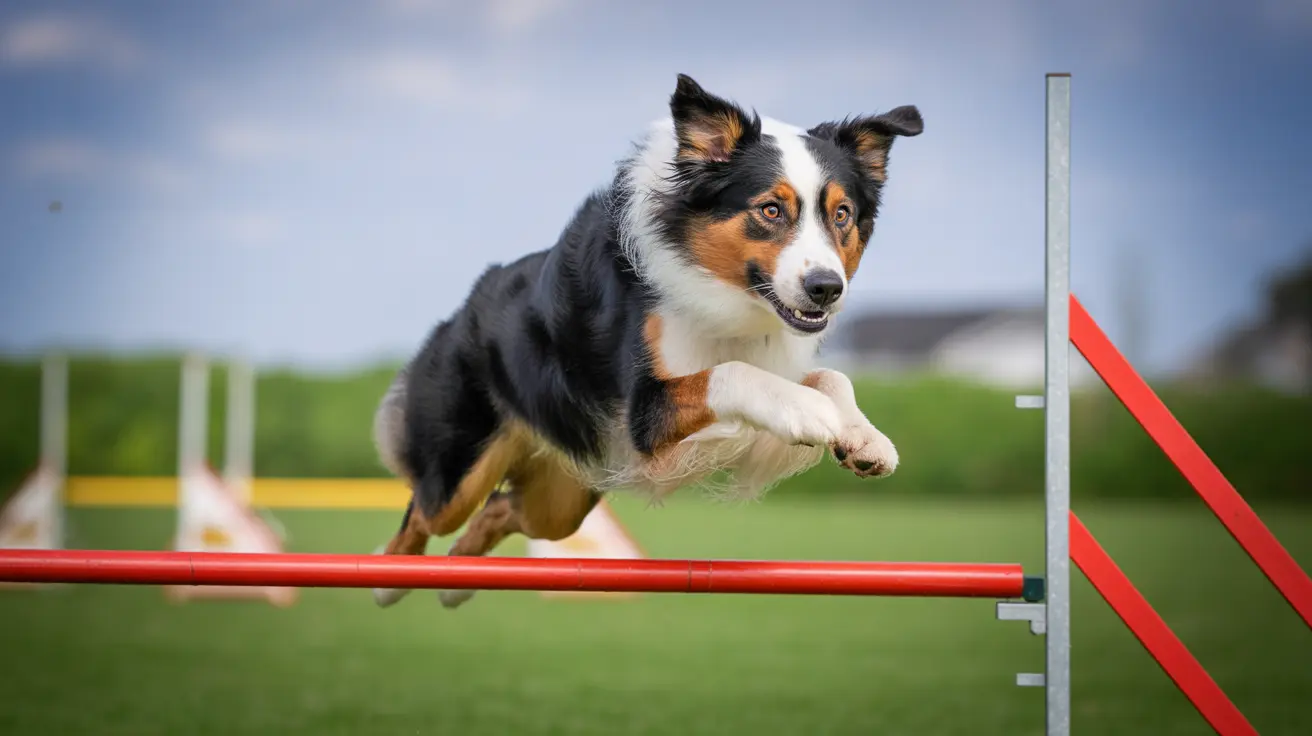The Ultimate Dog Sports Guide: Popular Activities to Strengthen Your Bond and Keep Your Pup Active
Dog sports have revolutionized the way pet owners connect with their canine companions, offering structured activities that go far beyond daily walks. Whether you're seeking competitive outlets or simply want to enhance your dog's physical fitness and mental well-being, the world of dog sports provides endless opportunities for both recreational enjoyment and serious athletic pursuits.
This comprehensive dog sports guide explores the most popular activities available today, helping you discover the perfect match for your dog's breed, temperament, and energy level. From high-energy obstacle courses to gentle scent work, these sports accommodate dogs of all ages, sizes, and abilities while strengthening the human-canine bond through teamwork and positive reinforcement.
Popular High-Energy Dog Sports
Agility: The Ultimate Obstacle Challenge
Agility stands as one of the most beloved dog sports worldwide, featuring dogs navigating obstacle courses filled with jumps, tunnels, weave poles, and other challenging elements. This sport tests speed, coordination, and obedience while promoting exceptional teamwork between handler and dog. The beauty of agility lies in its adaptability – many obstacles can be recreated indoors using household items, making it accessible year-round.
Beyond the physical benefits, agility builds tremendous confidence in dogs while improving their fitness levels. The sport requires dogs to respond to their handler's gestures and voice commands exclusively, creating a unique communication system that strengthens the bond between partners. Whether you're aiming for competition or simply want engaging exercise, agility offers scalable challenges suitable for beginners through advanced participants.
Flyball: Fast-Paced Team Competition
Flyball delivers high-octane excitement through team relay races where dogs jump hurdles, trigger spring-loaded boxes to release tennis balls, and race back to their handlers. This sport excels at encouraging teamwork among both dogs and their human partners while providing intense socialization opportunities. The fast-paced nature makes it perfect for high-energy breeds that need vigorous exercise to stay mentally and physically satisfied.
The team aspect of flyball creates a supportive community environment where dogs learn to work alongside others while burning substantial energy. This sport particularly benefits dogs with strong prey drive and ball motivation, channeling these natural instincts into structured, productive activities.
Canicross: Running Partnership Excellence
Canicross transforms regular jogging into an exhilarating partnership activity where dogs pull their humans using specialized harnesses and bungee lines. This cross-country running sport provides outstanding cardiovascular workouts for both participants while building exceptional teamwork skills. The sport's accessibility makes it appealing to owners seeking fitness activities they can share with their dogs without requiring specialized facilities.
Similar variations include bikejoring, where dogs pull humans on bicycles, offering even more intense exercise for high-energy breeds. These pulling sports tap into dogs' natural instincts while providing the vigorous exercise many breeds require for optimal health and behavior.
Creative and Artistic Dog Sports
Heelwork to Music (Canine Freestyle)
Dog dancing, formally known as Heelwork to Music or Canine Freestyle, combines obedience training with creative choreography set to music. This sport emphasizes tailoring movements to each dog's natural abilities, making it inclusive for various breeds and physical capabilities. The creative nature allows handlers to showcase their dog's unique personality while demonstrating advanced obedience skills through flowing routines.
The sport requires exceptional patience and bond-building, as dogs and handlers must work in perfect synchronization to execute choreographed sequences. This artistic expression of dog training often reveals surprising talents in dogs while providing mental stimulation through complex routine memorization.
Trick Training: Mental Stimulation Focus
Trick training prioritizes fun and mental stimulation by teaching dogs novel behaviors and entertaining commands. This accessible sport suits dogs of all ages and sizes, making it particularly valuable for older dogs or those with physical limitations. The variety of possible tricks ensures consistent engagement while building problem-solving skills and handler-dog communication.
Unlike some competitive sports, trick training emphasizes creativity and individual expression, allowing handlers to develop unique repertoires that showcase their dog's personality and capabilities. The mental challenge often proves as tiring as physical exercise, making it excellent for high-intelligence breeds.
Scent-Based and Tracking Sports
Scentwork (Nose Work): Natural Ability Enhancement
Scentwork harnesses dogs' extraordinary natural scenting abilities, challenging them to locate specific odors hidden in various environments. This mentally enriching sport operates on a dog-led basis, allowing canines to use their primary sense while building confidence through successful searches. The accessibility of scentwork makes it suitable for all breeds, ages, and physical abilities.
The sport's flexibility allows practice in indoor and outdoor environments using everyday locations. Dogs find tremendous satisfaction in utilizing their natural talents, often showing increased confidence and focus that transfers to other training areas.
Mantrailing: Human Scent Tracking
Mantrailing focuses specifically on tracking human scent trails to locate particular individuals. This non-competitive, dog-led sport builds exceptional confidence while harnessing natural scenting skills for practical applications. The individualized nature allows dogs to work at their own pace while developing advanced tracking abilities that can have real-world applications.
The sport's emphasis on following specific human scents rather than general odors creates highly specialized skills while providing mental stimulation that many dogs find deeply satisfying.
Low-Impact and Adaptive Sports
Canine Hoopers: Gentle Obstacle Navigation
Canine Hoopers offers a low-impact alternative to traditional agility, featuring courses of hoops, tunnels, and barrels that dogs navigate without jumping. This sport particularly suits older dogs or those with joint concerns, providing mental stimulation and gentle physical exercise without high-impact stress on bones and joints.
The flowing nature of hooper courses creates enjoyable challenges while maintaining accessibility for dogs with physical limitations. The sport's emphasis on smooth movement patterns makes it therapeutic for dogs recovering from injuries or managing chronic conditions.
Dog Parkour: Environmental Adaptation
Dog parkour utilizes urban or natural environments to create agility challenges, building confidence and dexterity through interaction with everyday obstacles. This innovative sport requires minimal equipment while encouraging dogs to thoughtfully navigate their surroundings, building problem-solving skills and environmental confidence.
The adaptability of parkour makes it accessible virtually anywhere, encouraging creative thinking in both dogs and handlers while providing exercise that feels like exploration rather than structured training.
Specialized and Traditional Sports
Dock Diving: Water-Based Competition
Dock diving appeals to water-loving breeds, featuring competitions where dogs jump from docks into water for distance or height achievements. This sport provides excellent low-impact exercise while satisfying dogs' natural swimming instincts. The specialized nature makes it particularly suitable for breeds with strong water affinity and jumping abilities.
Treibball: Herding Without Livestock
Treibball challenges dogs to herd large balls into goals using only their nose or body, providing mental and physical challenges especially appealing to herding breeds. This sport channels natural herding instincts into structured activities while remaining accessible to any dog capable of learning directional commands.
Traditional Pulling Sports
Traditional sports like sled dog racing and weight pulling tap into dogs' natural strength and endurance capabilities. These activities require exceptional teamwork and conditioning while honoring historical working relationships between humans and dogs. Modern adaptations make these sports accessible to urban environments through specialized equipment and training techniques.
Choosing the Right Sport for Your Dog
Selecting appropriate dog sports depends on multiple factors including breed characteristics, age, health status, temperament, and owner lifestyle. High-energy breeds like Border Collies often excel in agility and flyball, while scent hounds may gravitate toward tracking sports. Older dogs or those with joint concerns benefit from low-impact options like scentwork or canine hoopers.
Veterinary clearance and professional guidance are essential before beginning any sport to ensure your dog's safety and well-being. Proper warm-up, cool-down routines, and attention to nutrition—including joint support supplements containing undenatured type II collagen with omega-3 fatty acids—help maintain optimal health during athletic activities.
Health and Safety Considerations
Successful participation in dog sports requires attention to safety protocols and health maintenance. Gradual skill building prevents injuries while positive reinforcement techniques ensure enjoyable experiences for both dogs and handlers. Consistent monitoring of your dog's physical condition and energy levels helps prevent overexertion and maintains long-term athletic health.
Proper equipment selection for each sport enhances safety while improving performance. From specialized harnesses for pulling sports to appropriate surfaces for agility training, investing in quality gear protects your dog's health while maximizing enjoyment and success in chosen activities.
Frequently Asked Questions
What dog sports are best for beginners?
Beginner-friendly sports include basic obedience, trick training, and scentwork, as these require minimal equipment and focus on fundamental skills. These activities build communication between dog and handler while providing mental stimulation without intense physical demands. Many can be practiced indoors using household items.
How do I know which sport suits my dog's breed and temperament?
Consider your dog's natural instincts, energy level, and physical capabilities. High-energy breeds often excel in agility and flyball, while scent hounds gravitate toward tracking sports. Dogs with strong prey drive may enjoy lure coursing, while herding breeds often love treibball. Observe what activities naturally engage your dog during play.
Can older dogs participate in dog sports?
Yes, many sports accommodate older dogs, particularly low-impact options like scentwork, canine hoopers, and trick training. These activities provide mental stimulation and gentle physical exercise without stressing aging joints. Always consult your veterinarian before starting any new activity with senior dogs.
What equipment do I need to start dog sports?
Equipment requirements vary by sport. Basic sports like trick training require only treats and patience, while agility needs jumps, tunnels, and weave poles. Canicross requires specialized harnesses and bungee lines. Start with simple, inexpensive options and invest in quality equipment as your involvement deepens.
How do dog sports improve behavior problems?
Dog sports provide structured mental stimulation and physical exercise, often addressing root causes of behavioral issues like excessive energy, boredom, or lack of purpose. The training involved builds communication skills and strengthens the human-dog bond, leading to better overall behavior and increased confidence.
Are there competitive opportunities in dog sports?
Most dog sports offer competitive opportunities ranging from local fun matches to international championships. Sports like agility, obedience, and flyball have well-established competition circuits with formal titles and certifications. Many sports also offer non-competitive participation for those seeking recreation rather than competition.
How often should I practice dog sports with my dog?
Practice frequency depends on the sport and your dog's fitness level. Most sports benefit from short, frequent sessions (15-30 minutes) several times per week rather than long, infrequent training periods. This approach prevents fatigue while building skills progressively and maintaining your dog's enthusiasm for the activity.
Conclusion
The world of dog sports offers incredible opportunities to enhance your relationship with your canine companion while providing essential physical exercise and mental stimulation. From high-energy obstacle courses to gentle scent work, there's truly a sport suitable for every dog and owner combination. The key lies in understanding your dog's natural abilities, physical capabilities, and personal interests to find activities that bring joy to both participants.
Whether you're drawn to competitive excellence or simply want engaging activities to share with your dog, this comprehensive dog sports guide demonstrates that the benefits extend far beyond fitness. These activities build confidence, improve obedience, enhance social skills, and create lasting memories through shared achievements. Start with beginner-friendly options, prioritize safety and positive experiences, and watch as both you and your dog discover new talents and deepen your bond through the exciting world of canine athletics.





